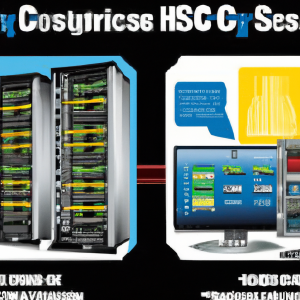The Evolution of Supercomputers: From Cray to Quantum
In the world of computing, supercomputers are the pinnacle of performance. These machines are capable of processing massive amounts of data at incredible speeds, making them essential for tasks that require intense computational power. Over the years, supercomputers have evolved significantly, from the iconic Cray machines of the past to the emerging quantum computers of today.
The Era of Cray Supercomputers
In the 1970s and 1980s, Seymour Cray revolutionized the world of supercomputing with his Cray-1 system. This iconic machine was known for its speed and efficiency, setting the standard for performance in the industry. The Cray-1 featured a unique design with a circular shape and was the first supercomputer to use vector processing, allowing it to perform complex calculations with ease.
As technology advanced, Cray continued to innovate, releasing a series of supercomputers that pushed the boundaries of what was possible. The Cray-2 introduced liquid cooling to improve performance, while the Cray-3 featured gallium arsenide semiconductors for even faster processing speeds.
The Rise of Parallel Processing
In the 1990s, supercomputing underwent a significant shift with the introduction of parallel processing. This approach involved using multiple processors to work together on a single task, allowing for greater speed and efficiency. Machines like the Thinking Machines CM-5 and the Connection Machine CM-5 exemplified this new era of supercomputing, setting the stage for future advancements in the field.
Parallel processing paved the way for the development of massively parallel supercomputers, such as the IBM Blue Gene series and the Cray XMT. These machines were capable of processing vast amounts of data in parallel, making them ideal for tasks like weather modeling, genetic sequencing, and financial modeling.
The Quantum Computing Revolution
Today, we stand on the brink of a new era in supercomputing with the rise of quantum computers. These machines harness the power of quantum mechanics to perform calculations at speeds that were once thought impossible. Quantum computers operate on qubits, which can exist in multiple states simultaneously, allowing for exponential increases in computational power.
Companies like IBM, Google, and D-Wave are at the forefront of quantum computing research, developing machines that promise to revolutionize the way we think about computing. Quantum computers have the potential to solve complex problems in areas like cryptography, drug discovery, and artificial intelligence, opening up new possibilities for innovation and discovery.
The Future of Supercomputing
As we look to the future, the evolution of supercomputers shows no signs of slowing down. With advancements in technology and research, we can expect to see even more powerful and efficient machines capable of tackling the most challenging computational tasks. From the iconic Cray machines of the past to the emerging quantum computers of today, the evolution of supercomputers continues to push the boundaries of what is possible in the world of computing.
- Increased computational power
- Improved efficiency
- Advancements in parallel processing
- The rise of quantum computing
- The potential for new breakthroughs in science and technology




